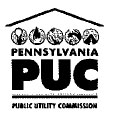PaPUC Comments - Plaintiff United States's Response To Public Comments : U.S. V. KeySpan Corp.
| This document is available in two formats: this web page (for browsing content) and PDF (comparable to original document formatting). To view the PDF you will need Acrobat Reader, which may be downloaded from the Adobe site. For an official signed copy, please contact the Antitrust Documents Group. |
Donna N. Kooperstein
Dear Ms. Kooperstein: The Pennsylvania Public Utility Commission1 ("PaPUC") herewith files these comments under the provisions of the Tunney Act, 15 U.S.C § 16 (d), with respect to the Proposed Final Judgment and Competitive Impact Settlement in the matter of United States v. Keyspan Corporation presently before the United States District Court for the Southern District of New York, Civil Action 10-civ-1415. As a state public utility regulatory agency in a state that has, for more than a decade, supported both wholesale and retail competition in the electric power generation markets, we are deeply concerned by allegations contained in the complaint that appear to conclusively establish the existence of a sophisticated multi-year effort by the defendant to evade competition in the New York installed capacity market, resulting in higher retail electricity prices for retail users of electricity. The effort appears to have been carefully calculated and executed so as to avoid action by New York state authorities, federal regulators and antitrust enforcers. This concern is heightened by the fact that the Federal Energy Regulatory Commission, which has regulatory jurisdiction over the New York City wholesale generation market, was apparently unable to detect or deter the behavior recited in the instant Complaint2 . As the complaint recites, during the 2006 – 2009 period, Keyspan was faced with the prospect of new competition in the New York City capacity market which had the prospect of substantially reducing its future capacity revenues. Unable to purchase control of its competitor and unwilling to risk head-to-head competition, Keyspan purchased a financial interest in the capacity sales of its competitor through a third party ("Keyspan Swap"). In turn, the third party sought and obtained a hedging agreement with the competitor Astoria to reduce its counterparty risk. The result was to make Keyspan indifferent with respect to competition, as it would receive revenue either through bidding into the capacity market or through its swap. It appears from the factual recitations of the Complaint that Keyspan's scheme had a high likelihood of success.3 This would seem to elevate the danger that New York City load serving entities, and ultimately the public could suffer competitive injury without remedy or the protection of the laws of New York State, or of the United States. That would seem to elevate the seriousness of the defendant's offense. Moreover, it is not clear that the facts in this case are limited in time and place; while the tariff rules in question in this case apply to a specific geographic location and time period, the general method employed by the defendant to avoid competition (i.e., the purchase of a financial interest in the operations of a competitor through a third party) is not so limited. Because the PaPUC is a state regulatory agency with limited jurisdiction and power under Pennsylvania law, we must rely heavily upon the effective enforcement of the antitrust laws of the United States to protect the public and the competitive wholesale and retail electric generation markets. The PaPUC understands that there has been a degree of difficulty associated with detecting and prosecuting the actions recited in this case; we do not oppose the proposed Stipulation and Final Judgment, although we cannot state whether the equitable and financial penalties in the Final Judgment result in the full remedy of injury to the public from execution of the scheme. This proceeding demonstrates that even if conduct inimical to competition is not effectively proscribed under the Federal Power Act, it may result in prosecution and serious consequences under the antitrust laws of the United States. The PaPUC and other public and private entities with a critical stake in the success of wholesale electric generation competition have benefitted from studying the facts of this case and will be better able to detect and deter similar schemes in the future. Lastly, the PaPUC would like to convey our thanks to the U.S. Department of Justice – Antitrust Division for enforcing competition law in wholesale electricity markets and sanctions against a scheme that manifestly reduced competition and raised prices in the New York City capacity market.
FOOTNOTES In 1997, the General Assembly enacted the Electric Generation Customer Choice and Competition Act, 66 Pa.C.S. §2801 et seq, restructuring Pennsylvania's traditional vertically integrated electric utilities and opening up retail markets to competition. As Pennsylvania is largely, and soon will be wholly within the control area of PJM Interconnection, L.L.C., a FERC-jurisdictional Regional Transmission Organization, the competitiveness of Pennsylvania's retail electric markets is heavily dependent on the competitive results of the PJM electric generation wholesale markets. Approximately 80% of the delivered price of retail electricity is attributable to the wholesale cost of generation. |

 U.S. Department
of Justice
U.S. Department
of Justice
